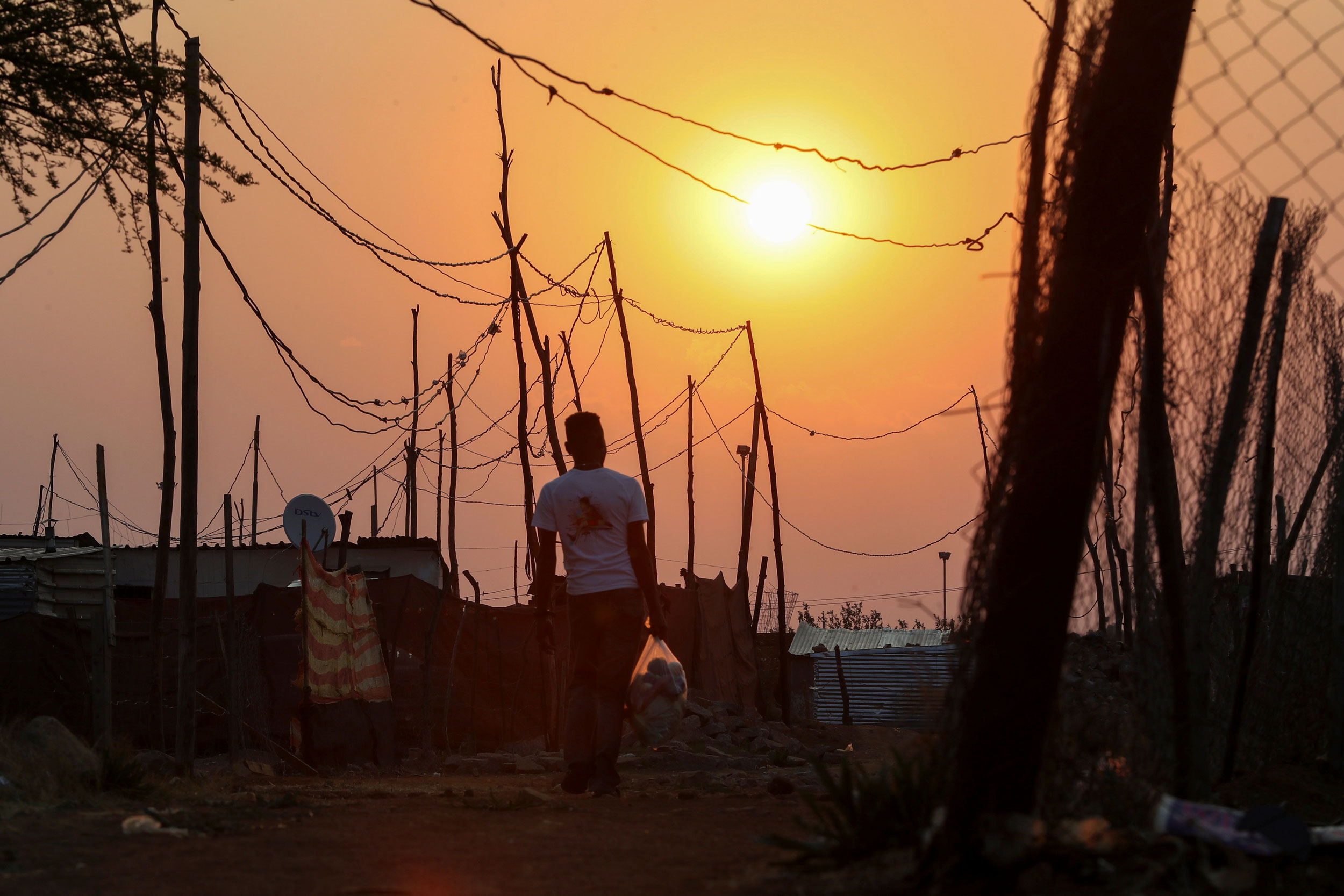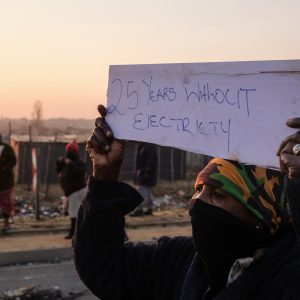Part two | Nuclear energy in Africa
The second in this three-part series looks at how power purchase agreements raise the cost of electricity for consumers and act as major sources of inflationary pressure in economies.
Author:
1 December 2020

Recent deals brokered between host nations and nuclear power companies show how consumers ultimately bear the cost of building nuclear power plants because of power purchase agreements, which favour the vendor and lower their financial risk but often lead to hugely inflated electricity costs for consumers.
No official details have yet been given to indicate what the price will be for electricity generated by the El Dabaa plant that Russia’s state-owned Rosatom is building in Egypt. But in 2016, one Egyptian energy expert predicted that prices per megawatt hour – how much it costs to produce one megawatt of energy for one hour – from El Dabaa would be at least four times more than from renewable power sources. Renewable energy prices have fallen significantly since 2016, while nuclear power has become more expensive.
Related article:
British consumers will pay excessive amounts for electricity from the Hinkley Point C nuclear power station that EDF is building for decades after the plant is completed. While construction does not follow the Build-Own-Operate model, EDF negotiated a 35-year power purchase price linked to inflation with the British government in 2016 to extract as much profit as possible. The British government’s Public Accounts Committee conservatively estimated that this deal will cost consumers an additional $40 billion (about R615 billion) over the 35 years of the contract compared with alternative energy sources such as solar and wind.
A similar story is playing out in Turkey. Critics have pointed out that the price the government has agreed to pay Rosatom for electricity generated by the Akkuyu plant the Russian vendor is building will cost the country an additional $27 billion over the 15-year period of the power purchase agreement. This is because the price that has been agreed between Rosatom and the Turkish government is significantly above current electricity costs. A 2019 report by the Union of Chambers of Turkish Engineers and Architects notes that electricity purchased from the plant will be at least 275% more expensive than alternatives.
Financial trouble
Despite such deals being signed, the long-term financial viability of state-owned nuclear vendors is questionable. EDF received significant cash injections from the French government and secured favourable loans backed by the British Treasury for Hinkley Point C, but was still forced to sell a third of its stake in the project to the China General Nuclear Power Group in 2016 because it was running out of money.
And EDF remains in serious financial trouble. It is about $52 billion in debt and two major agencies have given it a negative credit rating. The French energy company’s problems stem from delays in the construction of Hinkley Point C, which is said to have cost it at least another $4 billion so far, and at other nuclear power stations it is building. The Flamanville 3 project in France is now four times over budget and 10 years late. In Finland, the Olkiluoto 3 project is also four times over budget and is now only expected to be running in 2022, 13 years after its original start-up date. Further delays at Hinkley Point C and Flamanville 3 are strongly anticipated, which will plunge EDF further into the mire, meaning that more bailouts from the French government are likely.
Rosatom has experienced serious problems financing the Akkuyu nuclear power station. In 2016, it tried to sell a 49% share in the project because it could not raise the necessary capital to complete the plant. After failing to find any buyers, Rosatom was saved, at least in the short term, late last year by a $400 million loan from another Russian state-owned enterprise, Sberbank. Unsurprisingly, the completion of this plant is also delayed. Originally scheduled to be operational by 2019, its completion has already been pushed back twice and it is now predicted to be partially operational by 2023.
Related article:
That companies like EDF and Rosatom are reliant on the willingness of their respective governments to fund their survival is troubling. The economic consequences of the Covid-19 pandemic perfectly illustrate how susceptible both the global economy and individual economies are to unexpected shocks. Falling electricity sales in France owing to Covid-19 are resulting in intense speculation that EDF will need a significant emergency bailout from the French government sometime in early 2021 or face financial ruin. It is not clear what would happen to the plants it is currently building if EDF were to collapse. They could be abandoned, or taxpayers in host countries could be forced to pay even more for their completion.
These financial difficulties are often the result of problems that emerge during the construction phase of nuclear power stations, which lead to delays. A study completed in 2014 revealed the extent of this problem, saying only 3% of nuclear power stations have been built on schedule. In 2018, researchers from the Centre for Environmental Policy at Imperial College London found that between 1955 and 2016, construction delays increased the cost of nuclear power plants by 18% on average over their original budgets.
Consumers as cash cows
In effect, the public pays twice for these delays. In vendor countries such as France and Russia, taxpayers contribute to the bailouts of state-owned companies like EDF and Rosatom. In recipient countries, such as the United Kingdom, Egypt and Turkey, the public pays through artificially inflated electricity bills.
Rather than reflecting on this double burden, vendors and compliant governments are inventing new ways to squeeze yet more money out of the public. To fund additional nuclear power plants in Britain, the government is now considering a new funding model called Regulatory Asset Base (RAB).
The RAB model basically gives a blank cheque to vendors, allowing them to start charging customers for electricity during the construction phase of a power plant, before the station even produces electricity. In addition, it covers vendors for construction cost overruns of up to 30%, all of which would be paid for by consumers. It is proposed that the British government would cover any construction cost overruns of more than 30%. In effect, this funding model transfers almost all financial risk from investors to consumers, through hugely inflated electricity bills or tax transfers to vendors, or both.
In September, EDF appeared to indicate that it would only bid for the contract to build the proposed $25 billion Sizewell C nuclear plant in Britain if the British government adopted the RAB funding model.
A vortex of corruption
Another issue that needs to be seriously considered when evaluating the cost of nuclear power is corruption. A 2013 survey of corruption in the nuclear industry by Richard Tanter from the University of Melbourne found “widespread and often deep corruption” in the nuclear industry, saying that national and international nuclear regulatory regimes were “virtually completely ineffective”.
In recent years, the industry has been rocked by several corruption scandals.
In 2014, a massive corruption scandal involving South Korean nuclear vendor Korea Hydro & Nuclear Power, a subsidiary of Korea Electric Power Company, resulted in dozens of employees receiving a cumulative total of 258 years in prison for fraud and corruption. Many of these charges related to the supply of counterfeit equipment, some of it safety-related, to nuclear power stations in South Korea and the United Arab Emirates.
Related article:
In July, five people were arrested in Ohio in the United States, including the Ohio house speaker, for receiving $60 million from an embattled nuclear energy operator in exchange for securing the passage of a $1.5 billion bailout for the operator.
A month later, Brazilian federal prosecutors charged a subsidiary of EDF and Brazilian nuclear company Eletronuclear with corruption.
The construction and ongoing maintenance of nuclear power stations are areas particularly susceptible to corruption for two specific reasons. First, because they are megaprojects they are massively complicated enterprises that involve potentially hundreds of contractors and subcontractors, which creates fertile conditions for corruption. Second, these fertile conditions are exacerbated by the secrecy that surrounds nuclear power. While this secrecy is supposedly designed to stop the spread of nuclear technology or the capture of nuclear materials, it fosters an environment that is shielded from scrutiny and public oversight.
While Africa has no recent experience of nuclear power plant construction, other recent megaprojects on the continent – the Lesotho Highlands Water Project, the Lauca Dam in Angola, the Mambilla Hydropower Project in Nigeria, and the construction of the Medupi and Kusile power stations in South Africa – show how corruption can become entrenched in megaprojects on the continent.
In this regard, it is worth remembering that Transparency International’s Corruption Perception Index for 2019 found that sub-Saharan Africa was the worst performing region in the world, followed closely by North Africa. There is clearly good reason to be concerned about possible corruption in any nuclear deals concluded on the continent. South Africa’s recent unlawful deal between former president Jacob Zuma’s government and Rosatom shows just how real this danger is.
Part three looks at the costs associated with nuclear waste disposal, decommissioning nuclear power stations and major nuclear accidents.



